| Commission: | Commissioned by Folly and The Harris Museum and Art Gallery | Exhibition: | Current Harris Museum and Art Gallery, Preston, UK 26th March – 4th June, 2011. | Materials: | Video cameras, projector, computers, electronics | Description: | RICHARD: Your lover came, did he? SARAH: Mmnn. Oh yes. RICHARD: Did you show him the hollyhocks? This installation comprises six high-definition robotic cameras, positioned throughout the museum and programmed to identify and tag video footage with the age and gender of people in it. In the gallery space a single channel video projection shows a film automatically generated from the footage captured by the robotic cameras. The film is algorithmically constructed using Harold Pinter’s 1962 play ‘The Lover’ as a template. The Lover has three principle characters: the wife (“Sarah”), the husband (“Richard”), and the lover (“Max”). It eventually emerges that the lover is a fictional character role played by the husband to liven up their sex life. Indeed, throughout the play, everyone switches personas. Towards the end of the play, the husband expresses a wish to stop pretending, which upsets his wife. Finally, he switches back to the role of the lover. The absurdities of Pinter’s protagonists highlight a sense of alienation, isolation and confusion at the world. It is a play that explores fantasies and identities, social repression, sexual displacement and wish fulfillment. It asks whether experimentation with alternate identities can subsume a person’s everyday reality. There is potential conflict between Richard and Sarah, Sarah and Max, and Richard and Max, exploring boundaries of self and desire. The camera units track men and women of specific ages as they walk through the museum. They record vignettes of each subject and use these to generate video sequences, which are stored in a database. Particular vignettes are selected based on their demographic profile and recombined using text from the play as subtitles. The film loops continuously, generating a new variation of the story each time: new demographics are fed into the software, shifting the ages and appearances of the characters via different selections from the database. People physically dispersed around the museum find themselves intimately connected together via a real-time video narrative that references the politics of viewing that occurs within a museum: highly socialized and conditioned, on display as much as the objects in the museum. Knowing that their every move could become content for interpretation by my installation, the issues of identity, multiplicity, reality/duplicity, boredom and menace explored in the play become amplified. | Credits: | With thanks to DXARTS, James Hughes and John Robinson. | Technical: | Computer vision algorithms built in OpenFrameworks and C++. Video composition system built in MAX/MSP. Cameras controlled via Arduino. | Reviews/News: | Currently Hanging: The Lover The Guardian: This week’s new exhibitions Furtherfield |
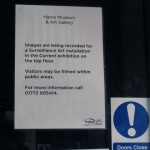 |
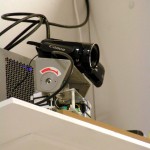 |
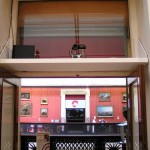 |
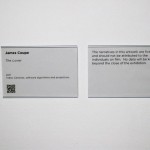 |
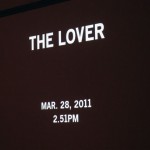 |
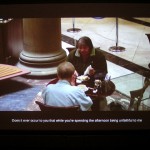 |
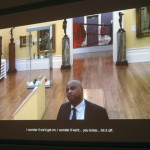 |
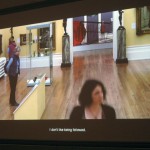 |